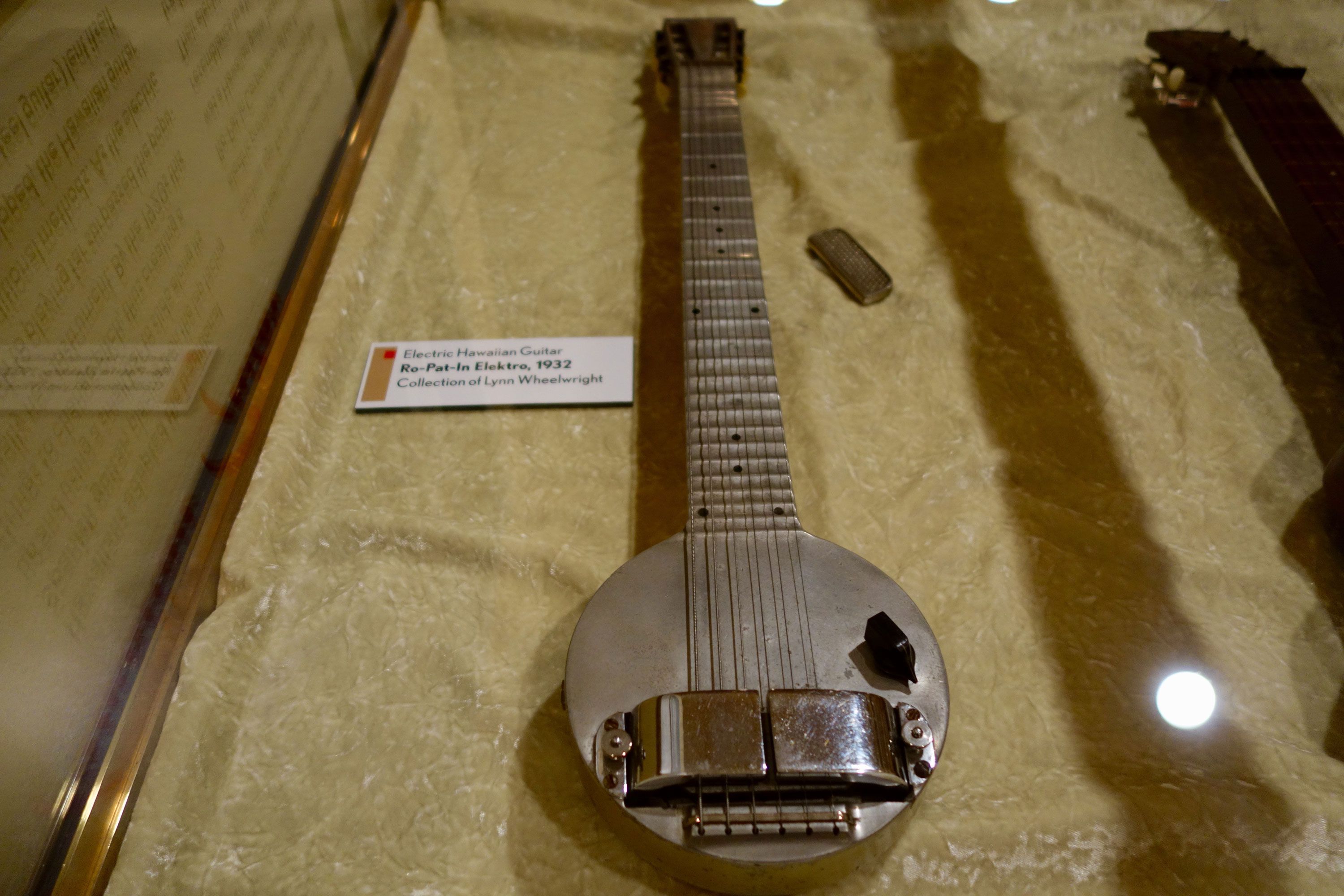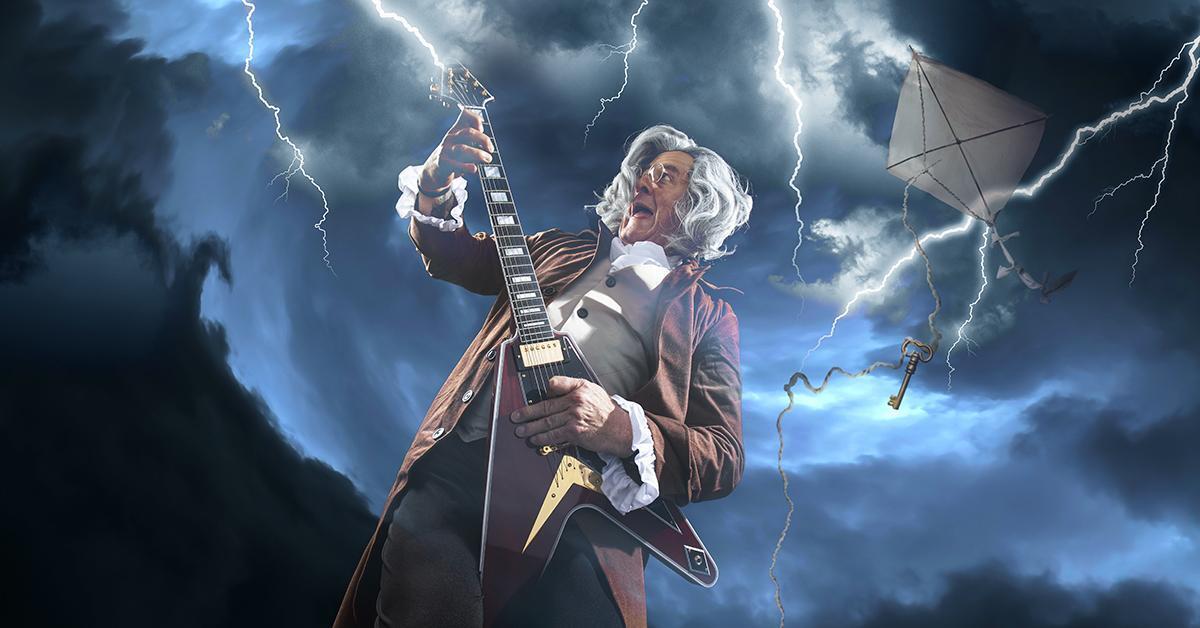Electric guitars were invented in the 1930s in the United States. Adolph Rickenbacker and George Beauchamp created the first successful model.
The introduction of electric guitars revolutionized the music industry, infusing it with a new sonic palette that dramatically altered the landscape of music. This groundbreaking invention facilitated the birth of rock ‘n’ roll and has since become an emblematic instrument in various genres.
Electric guitars empowered musicians to explore a wider range of sounds and techniques, resulting in a continual evolution of musical styles. Purpose-built to capture the nuances of electricity-induced vibrations, they provided artists with the means to amplify their music and captivate larger audiences. Today, the electric guitar is synonymous with modern music, embodying both innovation and tradition within its strings and circuits.
The Dawn Of Electric Guitars
An electrifying revolution took the music world by storm with the dawn of electric guitars. Transforming the soundscape of genres from blues to rock ‘n’ roll, electric guitars brought forth a new era of musical expressiveness. Its creation was a game-changer, amplifying the voice of the guitar beyond acoustic limitations and empowering musicians to explore new sonic territories.
Origins Of Electric Amplification
The necessity for louder guitars in band settings gave rise to electric amplification. Early attempts involved telephone transmitters to project the sound of the string vibrations. Innovators quickly identified the potential of electromagnetic pickups to convert string vibrations into electrical signals that could be amplified and projected through speakers.
- 1930s – The first amplified guitars appeared using electrostatic pickups.
- Rickenbacker ‘Frying Pan’ – Credited as the first commercially viable electric guitar.
Early Inventors And Prototypes
Musical minds like Adolph Rickenbacker and George Beauchamp pioneered the development of electric guitars. They experimented with various materials and technologies to capture the guitar’s tones effectively.
| Year | Inventor | Contribution |
|---|---|---|
| 1931 | George Beauchamp | Patented “The Frying Pan” |
| 1936 | Les Paul | Created “The Log”, a prototype that led to the solid-body guitar. |
Les Paul’s work on solid-body guitars helped overcome feedback issues and allowed for sustained note production, a feature that became integral to the sound of modern electric guitar.
The Evolution Of Stringed Instruments Pre-electric Era
Before the electric guitar, stringed instruments had a rich history. Lutes and violins paved the way for the acoustic guitar, which became popular in the 19th century. The driving force behind the electric guitar’s invention was to make the guitar sound louder amidst orchestras and bands, as the acoustic guitar struggled to project in bigger venues.
- Lute: An early stringed precursor with a sound box and a neck.
- Classical Guitar: Gained popularity in the 19th century; played solo and in chamber music.
- Archtop Guitar: Featured a curved top and back; a design that later influenced electric guitar aesthetics.
Stringed instruments have always evolved to meet the demands of musicians and audiences alike. The invention of the electric guitar was simply the next step in this ongoing journey. Innovators combined the traditional craftsmanship of luthiers with emerging electronic technology to produce the iconic instruments we know and love today.

Credit: www.popularmechanics.com
The 1930s: A Revolutionary Decade For Electric Guitars
The landscape of music forever changed in the 1930s when the electric guitar emerged, captivating audiences and unleashing a new era for stringed instruments. Shifting from the acoustic chambers to electromagnetism, this period witnessed groundbreaking inventions that sparked a sonic revolution. The electric guitar’s impact was immediate and enduring, heralding a new chapter in music that continues to resonate through genres and generations. This story is a tribute to the pioneers, their inventions, and the musical movements they influenced.
Rickenbacker ‘frying Pan’: The First Electric Guitar
The birth of the electric guitar is often attributed to the Rickenbacker ‘Frying Pan’. Conceived by George Beauchamp and engineered by Adolph Rickenbacker in 1931, this instrument set the tone for what was to come. With its round body and long neck, it was a strange yet fascinating creation. The ‘Frying Pan’ was the first to convert vibrations from steel strings into electrical signals using a horseshoe magnet pickup, leading the charge into the amplified era of guitars.
Electro String Instrument Corporation’s Contribution
In 1931, the Electro String Instrument Corporation was established with the expertise of Beauchamp and Rickenbacker. Their collaborative effort led to the development and distribution of electric guitars, setting the stage for widespread use. Instrumental to their venture was the manufacturing of electric Hawaiian guitars, a popular genre that opened the market to the potential of amplified stringed instruments.
The Influence Of Jazz And Blues Musicians
Jazz and blues genres were among the first to embrace the electric guitar’s allure, intrigued by the instrument’s ability to project sound. Icons like Charlie Christian astounded audiences with clean, amplified notes that could soar above a band’s ensemble. This era saw electric guitars propel forward in a blend of innovation and art, led by the talented musicians who saw its potential to transform their sound.
Technological Advancements In The 1930s
Technological strides of the 1930s significantly shaped the course of electric guitar history. The decade was marked by the integration of the magnetic pickup, an invention that converted string vibrations directly into an electrical signal. The advancement allowed for more clarity and volume, which in turn revolutionized live performances. Manufacturers raced to refine picks, amplifiers, and solid-body designs, all of which contributed to the loud and vivid presence of the electric guitar in music.
The Widespread Adoption And Continued Innovation
The electric guitar not only transformed the soundscape of music but also became a symbol of cultural evolution, weaving its electronic growl and twang through the history of the 20th century. The instrument’s journey from inception to a global cultural mainstay has been marked by a series of technological innovations and legendary models that captured the imagination of generations. The widespread adoption and continued innovation of electric guitars tell a story of human ingenuity and artistic expression that continues to resonate today.
The Post-war Boom And Popularization
After World War II, a dramatic surge in economic growth facilitated a golden era for the electric guitar. Rapidly evolving music styles, coupled with increasing purchasing power, set the stage for a transformation in entertainment and leisure activities. Mass production techniques improved, enabling guitar manufacturers to meet the demand from a youth culture eager to find its voice.
Key Models: The Telecaster And Stratocaster
At the forefront of electric guitar innovation were iconic models that have become synonymous with the instrument itself. The Telecaster, with its cutting tones and solid body, was a game-changer upon its introduction by Leo Fender in 1950. Shortly thereafter, the Stratocaster redefined what a guitar could be, with its contoured body and versatile sound becoming a favorite among guitarists across various genres. These models served as benchmarks for quality and design, inspiring countless musicians and spawning numerous imitations.
The Role Of Rock ‘n’ Roll In Electric Guitar Fame
The explosion of rock ‘n’ roll in the 1950s solidified the electric guitar’s place in popular culture. Artists like Chuck Berry and Elvis Presley brought the electric guitar to the forefront, becoming symbols of an era defined by its sound. With each electrifying performance, the guitar was etched deeper into the fabric of musical legend, driving social movements and defining rock music as a genre.
Modern Developments And Future Of Electric Guitars
Today, the legacy of the electric guitar is maintained through a blend of tradition and technological advancement. Innovators continuously push the boundaries with new materials, electronic enhancements, and connectivity features designed for the digital age. Digital signal processing (DSP) and modeling technology open up new sonic possibilities, while sustainable practices in manufacturing highlight the industry’s adaptability to modern challenges. As genres merge and music evolves, the electric guitar stands prepared to inspire the next wave of artists.

Credit: www.sweetwater.com
What Is the History Behind the Invention of the Electric Guitar?
The evolution of the electric guitar began in the early 1930s when innovators sought to amplify sound for larger audiences. Pioneers like George Beauchamp and Les Paul experimented with electromagnetic pickups and solid body designs, paving the way for the wide array of electric guitars that transformed music in countless genres.
Frequently Asked Questions On When And Where Electric Guitars Invented
Who Invented Electric Guitar In 1929?
The electric guitar was invented in 1929 by George Beauchamp. He collaborated with Adolph Rickenbacker to create and market the first models.
Who Is Credited For Inventing The Electric Guitar?
George Beauchamp is generally credited with inventing the first electric guitar in the 1930s, alongside Adolph Rickenbacker. Their creation led to the development of the modern electric guitar.
Why Did Electric Guitars Come Into Use In The 1940s?
Electric guitars emerged in the 1940s due to the need for louder instruments in jazz and big band ensembles, allowing guitarists to be heard alongside other instruments. Advances in amplification technology at that time made this development possible.
When Was The Electric Bass Guitar Invented?
The electric bass guitar was first invented by Leo Fender in 1951. His design, known as the Precision Bass, revolutionized the instrument.
Conclusion
The journey of the electric guitar has been a game-changer for music. Born in the 1930s, this beloved instrument emerged from the United States, igniting genres and passions worldwide. Remember, every strum echoes its rich heritage. Let’s keep celebrating the electric guitar’s revolutionary role in shaping our sonic landscape.
